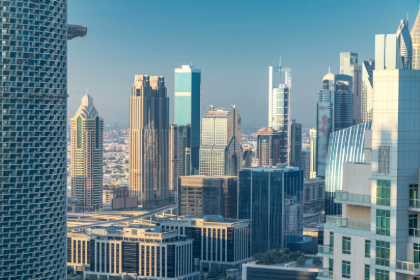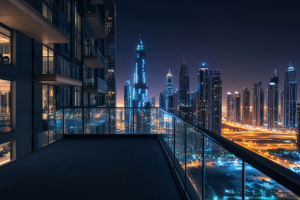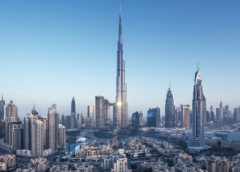Vertical Living: Stunning Innovations in Dubai’s Best High-rises
The Future of Vertical Living: Inside the Most Innovative Dubai High-rise Towers
The future of vertical living is shaping up to be an exciting journey, particularly in a city like Dubai, which has consistently pushed the boundaries of architectural innovation. With its iconic skyline, Dubai is home to some of the most extraordinary high-rise structures in the world. These towers are not just about height; they represent a lifestyle, a vision for sustainability, and a blending of luxury and practicality.
Embracing Architectural Innovation
Dubai’s commitment to innovation is evident in its high-rise towers, which are reimagining the way urban spaces can be utilized. Structures like the Burj Khalifa set the standard for what’s possible, but a wave of new projects is set to redefine the skyline even further. With concepts like vertical gardens, mixed-use spaces, and smart technologies, these innovations aim to enhance both community living and environmental sustainability.
One example is the Dubai Creek Tower, which is expected to surpass the Burj Khalifa in height. Yet, it doesn’t only focus on being the tallest; it incorporates features that promote a sense of community, including open spaces and recreational facilities. Such advancements hint at a future where high-rises serve multiple purposes, blending residential, commercial, and leisure spaces within a single structure.
Sustainability at New Heights
As the world increasingly focuses on sustainability, Dubai’s high-rise developments are stepping up to the challenge. The future of vertical living is intrinsically aligned with environmental consciousness, reflecting society’s growing commitment to ecological preservation.
Many new towers are designed to be energy-efficient, utilizing advanced technologies such as solar panels, rainwater harvesting systems, and energy-efficient insulation. The Dubai Sustainable City, while not a traditional high-rise, illustrates this trend. It features a dense network of residential structures designed with sustainability at their core. This approach promotes a lifestyle that minimizes carbon footprints while still offering modern conveniences.
Additionally, vertical farming is gaining traction in Dubai’s architectural projects. Innovations like green walls and terrace gardens not only beautify these structures but also contribute to urban agriculture, providing fresh produce amidst the concrete jungle.
The Role of Technology in Urban Living
The future of vertical living is also being significantly impacted by technology. Smart buildings are becoming the norm, integrating advanced systems to enhance the living experience for residents. From automated climate control to smart security systems, these technologies aim to provide increased convenience and safety.
For instance, the Dubai Marina district showcases high-rises that incorporate smart technologies for everything from energy management to real-time building maintenance. These features make life in high-rises not only luxurious but also practical, as they adapt to the needs of modern residents.
Community-Centric Designs
Gone are the days when high-rise living was synonymous with isolation. The latest architectural philosophies emphasize community, promoting social interactions among residents. Towers are being designed not just with apartments but with shared spaces like gardens, gyms, and recreational areas that foster a sense of belonging.
An excellent example is the Address Boulevard, where communal pools, cafes, and event spaces are strategically integrated into the design. This shift towards community-centric living reflects an understanding of the importance of social interaction in urban settings.
A Glimpse into the Future
Looking ahead, the future of vertical living in Dubai is bright, shaped by a blend of luxury, sustainability, and community values. Upcoming projects like One Za’abeel, which will feature the world’s first rotating building, promise to challenge architectural norms further. These structures will likely incorporate features that are not yet imagined, presenting a vision of urban living that is both aspirational and accessible.
The integration of culture and heritage into tower designs is also a trend that will likely gain momentum. High-rises that tell stories of Dubai’s rich past while embracing a futuristic outlook will resonate with residents and tourists alike. This combination is essential for crafting a unique city identity that respects its traditions even as it moves boldly into the future.
Conclusion
In summary, the future of vertical living in Dubai is not just about height; it’s about innovation, sustainability, and community. With each new high-rise, Dubai is crafting a narrative that blends luxury with practicality, aiming to create spaces that enhance the quality of life for residents. As the city continues to evolve, it will set a benchmark for urban living worldwide, showcasing how architectural innovation can lead to more connected, environmentally conscious, and enjoyable urban spaces. The future of vertical living has indeed arrived, and it is impressive.






